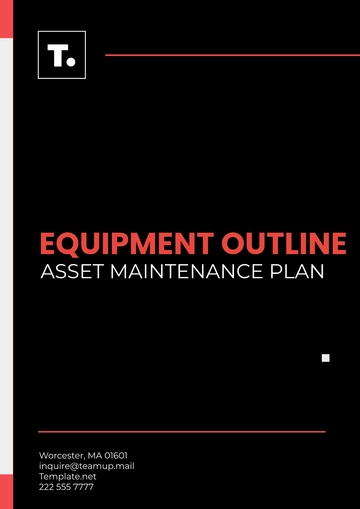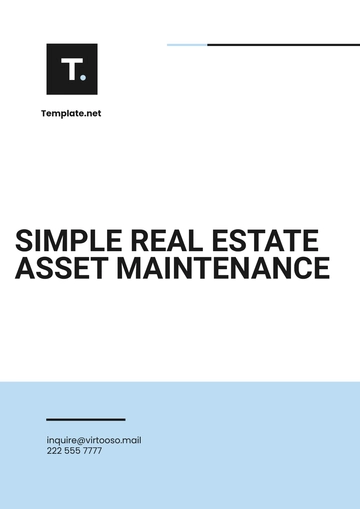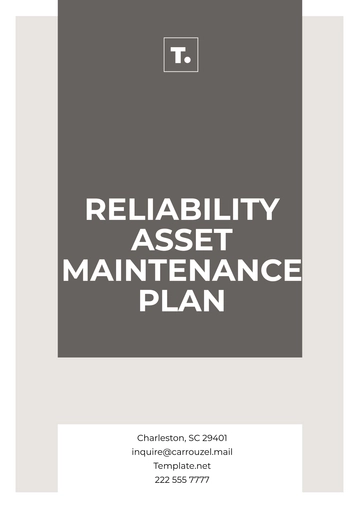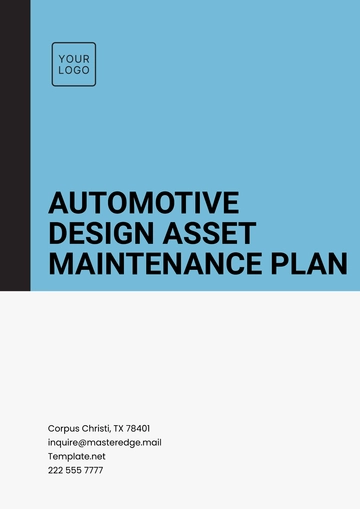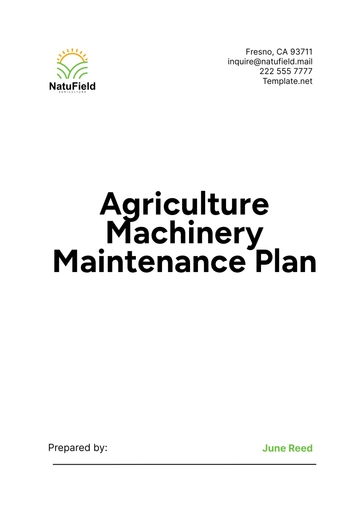Free Facility Asset Maintenance Plan Format
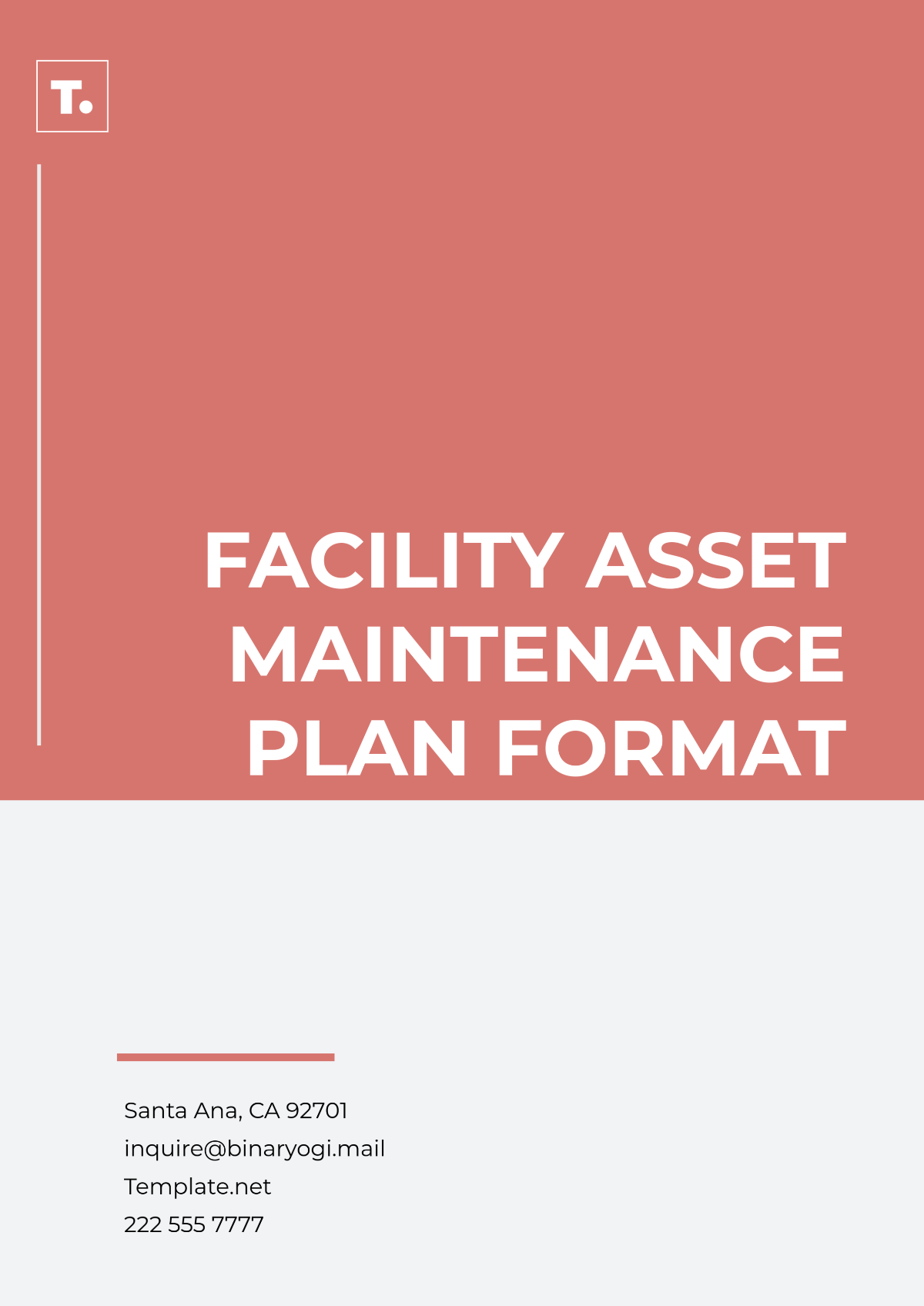
Prepared by: [Your Name]
Company: [Your Company Name]
Date: [Date]
I. Introduction
This section provides an overview of the Facility Asset Maintenance Plan Format, outlining the goals, objectives, and scope of asset maintenance within the facility. It sets the context for maintaining all assets to ensure their efficiency, longevity, and safety.
II. Asset Inventory
A detailed list of all assets in the facility. Each asset should be documented with the following information:
A. Equipment and Machinery
Description:
Model/Serial Number:
Function/Role:
Location within the facility:
Age/Condition:
B. Infrastructure
HVAC systems:
Plumbing systems:
Electrical systems:
Fire protection systems:
C. Technology Assets
IT hardware (e.g., servers, computers):
Software systems:
D. Vehicle Fleet
Vehicle ID:
Service records:
Maintenance schedules:
III. Maintenance Schedule
A clear and structured maintenance schedule, including:
A. Routine Inspections
Frequency (e.g., weekly, monthly)
Checklist of components to inspect
B. Preventive Maintenance
Frequency (e.g., quarterly, bi-annually)
Tasks (e.g., lubrication, filter changes, calibration)
C. Corrective Maintenance
Actions required after asset failure or malfunction
D. Critical Asset Prioritization
List of assets deemed high-priority for maintenance
Schedule adjustments for critical repairs
IV. Maintenance Procedures
Step-by-step guidelines for each maintenance activity:
A. Inspection Procedures
Procedures for visual and functional inspections
Tools or checklists required
B. Repair Procedures
Diagnosing issues
Corrective actions (e.g., parts replacement)
C. Cleaning Procedures
Cleaning steps for equipment, systems, and machinery
D. Documentation
Method of recording maintenance tasks
Tracking repair history and costs
V. Roles and Responsibilities
Clarify the responsibilities of individuals involved in the maintenance process:
A. Facility Manager
Overseeing the overall maintenance plan
Ensuring resources and budgets are available
B. Maintenance Supervisor
Directing day-to-day maintenance operations
Assigning and monitoring tasks
C. Maintenance Technicians
Performing routine inspections and repairs
Reporting on asset conditions
D. External Contractors
Engaging specialists for specific repairs or services
Providing necessary certifications and reports
VI. Budget and Resources
Outline the financial and resource requirements for the maintenance program:
A. Annual Budget
Total allocated budget for asset maintenance
Breakdown of costs (routine, preventive, and corrective maintenance)
B. Resource Requirements
Tools and equipment needed for maintenance tasks
Spare parts and materials inventory
C. Cost Tracking
Procedures for monitoring and tracking expenses
Methods for adjusting forecasts as needed
VII. Performance Metrics
Key performance indicators (KPIs) to track the success and effectiveness of the maintenance program:
A. Asset Uptime
Target uptime percentage for each critical asset
Methods for tracking and improving uptime
B. Maintenance Costs
Tracking total costs and comparing them to the budget
Identifying cost-saving opportunities
C. Maintenance Response Time
Measuring the time taken from identifying an issue to resolving it
D. Asset Longevity
Tracking asset lifespan and predicting end-of-life cycles
Developing strategies for asset replacement or upgrades
VIII. Compliance and Safety Standards
Ensure all maintenance activities adhere to industry regulations and safety protocols:
A. Regulatory Compliance
List of applicable local, state, and federal regulations
Ensuring adherence to safety, environmental, and industry standards
B. Safety Protocols
Personal protective equipment (PPE) requirements
Safety training and certifications for maintenance staff
Emergency procedures during maintenance activities
C. Environmental Considerations
Proper disposal of hazardous materials
Implementing energy-efficient and eco-friendly practices in maintenance tasks
- 100% Customizable, free editor
- Access 1 Million+ Templates, photo’s & graphics
- Download or share as a template
- Click and replace photos, graphics, text, backgrounds
- Resize, crop, AI write & more
- Access advanced editor
Optimize facility maintenance with the Facility Asset Maintenance Plan Format Template from Template.net. This editable and customizable template streamlines asset management, offering a structured format for scheduling tasks and tracking performance. Fully editable in our Ai Editor Tool, it ensures efficient planning and consistent upkeep of facility assets, helping you maintain peak operational efficiency effortlessly.
You may also like
- Finance Plan
- Construction Plan
- Sales Plan
- Development Plan
- Career Plan
- Budget Plan
- HR Plan
- Education Plan
- Transition Plan
- Work Plan
- Training Plan
- Communication Plan
- Operation Plan
- Health And Safety Plan
- Strategy Plan
- Professional Development Plan
- Advertising Plan
- Risk Management Plan
- Restaurant Plan
- School Plan
- Nursing Home Patient Care Plan
- Nursing Care Plan
- Plan Event
- Startup Plan
- Social Media Plan
- Staffing Plan
- Annual Plan
- Content Plan
- Payment Plan
- Implementation Plan
- Hotel Plan
- Workout Plan
- Accounting Plan
- Campaign Plan
- Essay Plan
- 30 60 90 Day Plan
- Research Plan
- Recruitment Plan
- 90 Day Plan
- Quarterly Plan
- Emergency Plan
- 5 Year Plan
- Gym Plan
- Personal Plan
- IT and Software Plan
- Treatment Plan
- Real Estate Plan
- Law Firm Plan
- Healthcare Plan
- Improvement Plan
- Media Plan
- 5 Year Business Plan
- Learning Plan
- Marketing Campaign Plan
- Travel Agency Plan
- Cleaning Services Plan
- Interior Design Plan
- Performance Plan
- PR Plan
- Birth Plan
- Life Plan
- SEO Plan
- Disaster Recovery Plan
- Continuity Plan
- Launch Plan
- Legal Plan
- Behavior Plan
- Performance Improvement Plan
- Salon Plan
- Security Plan
- Security Management Plan
- Employee Development Plan
- Quality Plan
- Service Improvement Plan
- Growth Plan
- Incident Response Plan
- Basketball Plan
- Emergency Action Plan
- Product Launch Plan
- Spa Plan
- Employee Training Plan
- Data Analysis Plan
- Employee Action Plan
- Territory Plan
- Audit Plan
- Classroom Plan
- Activity Plan
- Parenting Plan
- Care Plan
- Project Execution Plan
- Exercise Plan
- Internship Plan
- Software Development Plan
- Continuous Improvement Plan
- Leave Plan
- 90 Day Sales Plan
- Advertising Agency Plan
- Employee Transition Plan
- Smart Action Plan
- Workplace Safety Plan
- Behavior Change Plan
- Contingency Plan
- Continuity of Operations Plan
- Health Plan
- Quality Control Plan
- Self Plan
- Sports Development Plan
- Change Management Plan
- Ecommerce Plan
- Personal Financial Plan
- Process Improvement Plan
- 30-60-90 Day Sales Plan
- Crisis Management Plan
- Engagement Plan
- Execution Plan
- Pandemic Plan
- Quality Assurance Plan
- Service Continuity Plan
- Agile Project Plan
- Fundraising Plan
- Job Transition Plan
- Asset Maintenance Plan
- Maintenance Plan
- Software Test Plan
- Staff Training and Development Plan
- 3 Year Plan
- Brand Activation Plan
- Release Plan
- Resource Plan
- Risk Mitigation Plan
- Teacher Plan
- 30 60 90 Day Plan for New Manager
- Food Safety Plan
- Food Truck Plan
- Hiring Plan
- Quality Management Plan
- Wellness Plan
- Behavior Intervention Plan
- Bonus Plan
- Investment Plan
- Maternity Leave Plan
- Pandemic Response Plan
- Succession Planning
- Coaching Plan
- Configuration Management Plan
- Remote Work Plan
- Self Care Plan
- Teaching Plan
- 100-Day Plan
- HACCP Plan
- Student Plan
- Sustainability Plan
- 30 60 90 Day Plan for Interview
- Access Plan
- Site Specific Safety Plan





